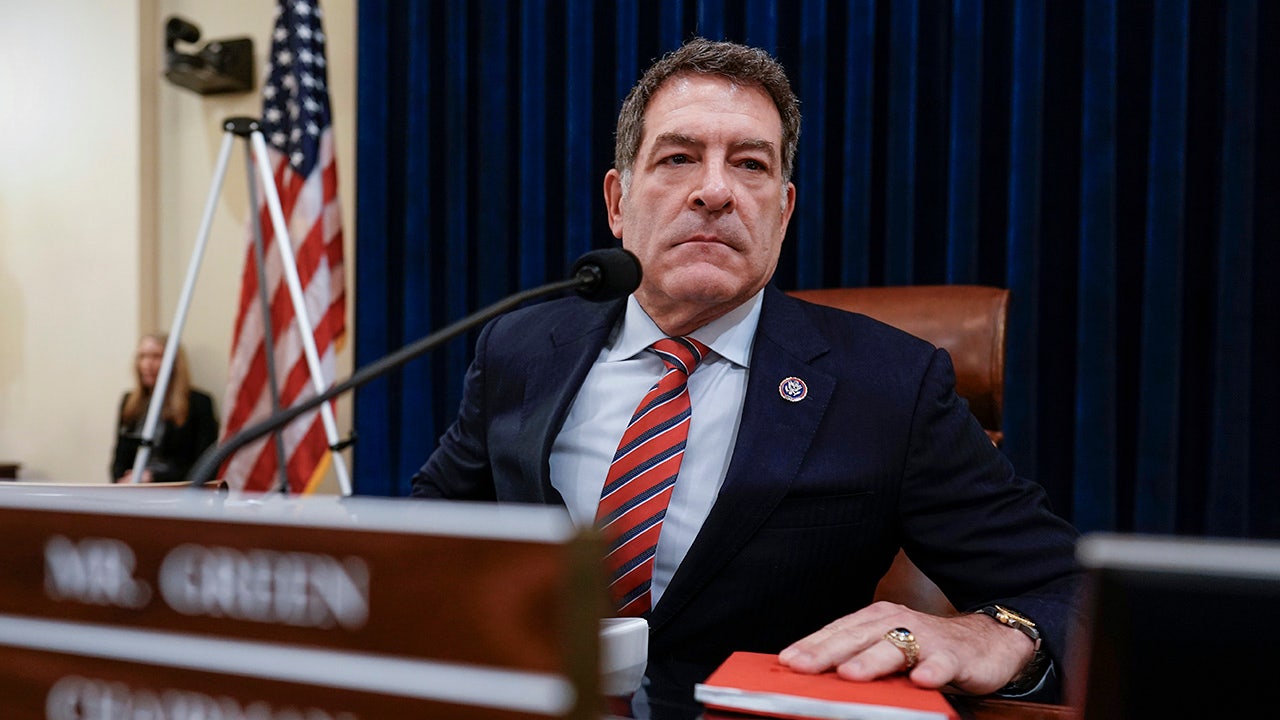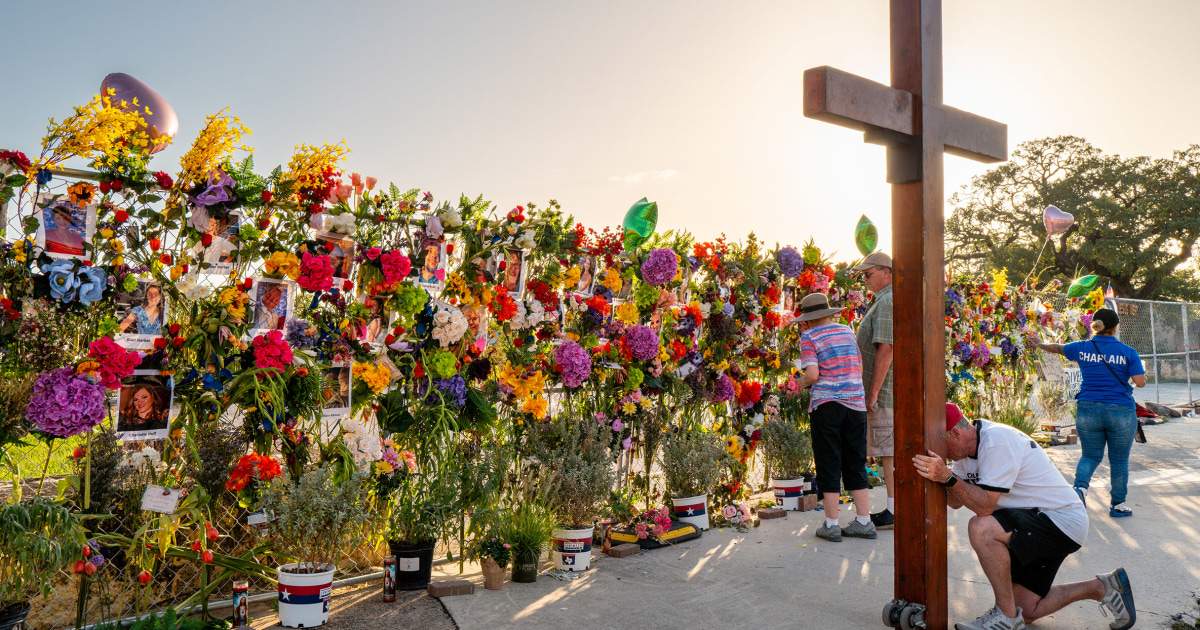Oregon
What’s the oldest bar in Oregon? Finding it was harder than you’d think
:quality(70)/cloudfront-us-east-1.images.arcpublishing.com/advancelocal/RDQUW4SCKZH33OZKIJIHBH3S3I.jpeg)
For as long as anyone can remember, the Rainbow Cafe in downtown Pendleton has made a unique claim to fame: The oldest bar in Oregon. It’s on the Rainbow’s menus, website and the T-shirts for sale at the bar.
Portlanders might disagree and point to Huber’s Café, founded in 1879 – but the Pendleton bar claims a key distinction. The Rainbow, its owners said, is the oldest continuously operating tavern location in the state, having served out of the same brick building since 1883. Huber’s moved buildings several times before landing at its current home in 1910.
But there’s at least one other bar that claims to have been founded in 1883 and never moved – the Pioneer Saloon in the tiny, southern Oregon town of Paisley.
Were there other saloons and taverns just as old across the state? I decided to investigate and determine which might actually be the oldest.
But first, a caveat: During the Prohibition years, alcohol sales were banned. In Oregon, statewide prohibition took effect in 1916 — three years before the ratification of the 18th Amendment made the entire country dry, until its repeal in 1933. During those years, these establishments didn’t close but continued as either restaurants, stores, or pool halls. (Could you still buy booze on the side? Very possibly.)
Other contenders
I put out a call on The Oregonian’s social media accounts, and readers suggested other historic bar locations throughout the state that might be the oldest. Most of these bars didn’t claim an earlier founding date than the 1880s. There’s Mac’s Place in Silverton (1890), the Imnaha Store and Tavern in eastern Oregon (1904) and Luckey’s in Eugene (1911). The Portway Tavern in Astoria says it’s the “oldest watering hole in the oldest settlement west of the Rockies,” and while Astoria was founded in 1811, the tavern opened in 1923.
Trails End Saloon in Oregon City is located inside an old building, but the current iteration of the bar there was established in 1992.
It’s the same with the Bella Union in Jacksonville. While named for a bar from the 1800s, it’s only been open in its current form since 1988.
:quality(70)/cloudfront-us-east-1.images.arcpublishing.com/advancelocal/WXPOHPTOTRFODLPMMCYOFNRX5Y.png)
Baldwin Saloon in The Dalles claimed it was founded in 1876, and there’s some supporting evidence for this. An 1878 article in The Oregonian describes how a man in The Dalles, arrested for robbing Baldwin Saloon, killed his accused accomplice while they were both in jail.
That gets us pretty close to the 1876 founding date, but the saloon didn’t last. The building served as a steamboat company office and coffin storage for a mortuary before new owners opened a tavern there in 1991 using the historic Baldwin Saloon name.
Sadly, Baldwin Saloon closed during the pandemic, but its owners, who also own Sunshine Mill in The Dalles, said the saloon was likely to reopen sometime this year.
:quality(70)/cloudfront-us-east-1.images.arcpublishing.com/advancelocal/MHJ3LRJTOJHL5KVY3F3FADHA4E.jpeg)
Another possibility was the Wolf Creek Inn & Tavern, also founded in 1883. About 20 miles north of Grants Pass, it’s the oldest continuously operating hotel in Oregon.
But the name is deceiving. In a story about Wolf Creek for Offbeat Oregon, author Finn J.D. John writes that the word “tavern” used to refer to a place that offered overnight lodging, not necessary alcohol. Wolf Creek Tavern was built by Henry Smith, who was famously a teetotaler. A 1936 feature on the hotel in The Oregonian confirmed that in its early years, the tavern didn’t serve alcohol.
Rainbow Cafe
The story goes that the Rainbow Cafe opened in 1883 as The State Saloon, a sometimes rough and tumble establishment where its owner was fatally shot in 1899. Today, the Rainbow has all the hallmarks of an Old West tavern, with a long bar on one side of the wall, wooden booths lining the other, and memorabilia of past Pendleton Roundups plastered along the walls.
In Pendleton, one of the best primary sources for local history is the East Oregonian newspaper, which has been chronicling life in Umatilla County since 1875. Official records from 1883 are scarce, but I hoped to find a newspaper mention of the saloon’s opening.
Most editions from the time period haven’t been digitized for online searching. Fortunately, the publisher of The East Oregonian, Kathryn B. Brown, allowed me access to the newspaper’s archive room, which contains walls of bound copies of the newspaper dating to the 1800s.
It was a tedious task. Early newspapers didn’t always use headlines for local news briefs, and I spent the better part of two days scanning tiny newsprint.
I started with the year 1880, when the building that today houses the Rainbow Cafe was built by Thomas Milarkey. A brief article from June 26, 1880, said he was building a “two-story brick.” The building today is believed to be the first brick commercial building constructed in downtown Pendleton.
Work was completed that year, and the Jan. 1, 1881, edition of the newspaper contained an ad for the opening of Sommerville & Raley’s drug store “at the new brick store.”
I scanned every edition over the next few years. Stories and advertisements rarely used addresses, but because the building was unique, it was often referred to as “Milarkey’s brick.”
By following advertisements and notices on sales of businesses and dissolution of partnerships, I followed through the years as the store became Raley’s Drugs, Robbin’s City Drug Store, Farrow & Turner’s store with E.P. Nichols selling watches inside, and F. J. Donaldson’s City Drug Store. The upstairs held offices, at times occupied by attorneys or dentists. Through at least 1889, the location was never described as a saloon.
And then: On Feb. 15, 1889, the newspaper reported that “F.J. Donaldson’s stock of goods was yesterday entirely removed to his new stand next door, and he and his clerks are now as busy as bees arraying it in an orderly manner.” A few days later on Feb. 21, the paper reported, “The flooring of the building recently vacated by F.J. Donaldson is being raised to conform to the established grade of the sidewalk outside.”
And that’s about as far as I got in the archives before I ran out of time. There was no evidence of a saloon.
I later found two other sources that seem to confirm the space was not a saloon in the 1880s.
:quality(70)/cloudfront-us-east-1.images.arcpublishing.com/advancelocal/C7JDZT2HXFEAVLUR5X7HEENPYE.jpeg)
Author Vic J. Kucera wrote the meticulously researched Pendleton book “Rivoli: The rise of public halls, opera houses and film theaters amid saloons, gambling halls, brothels and opium dens.” It includes an 1885 drawing from the John Wilson Special Collections at the Multnomah County Central Library showing Pendleton’s corner of Main and Court streets, with signs for E.P. Nichols and Farrow & Turner above the door of Milarkey’s brick.
Kucera also suggested I check old fire insurance maps to see what kinds of businesses were operating in various buildings in a given year. The fire insurance maps for Pendleton, available online through the Library of Congress, show that the Rainbow Cafe building was still a general store in May 1889.
The next available fire insurance map from 1896 does indeed list the spot as a saloon.
I also found an 1890 city directory at the Pendleton Library that lists the location — at the time, the address was 725 Main St. — as a business owned by James Marston selling “cigars and tobacco.”
A few more days in the East Oregonian archives might be able to confirm this, but it seems the Rainbow Cafe location became a saloon sometime between 1890 and 1896.
Pioneer Saloon
The next stop on this quest was the Pioneer Saloon in Paisley in southern Oregon, a five and a half hour drive from Portland. The Pioneer appears little changed since the 19th century. It, too, has an antique bar and memorabilia of Paisley’s ranching and sheep herding families hung along the walls. (And it’s for sale, if you’d like to own it.)
Brenda Morgan, a local historian, got interested in the saloon while researching her ancestors. The Pioneer’s first owner was William Henry Miller, whose widow would go on to marry Morgan’s great uncle.
Miller was killed after being thrown from a horse on May 30, 1883 – a tragedy that turned out to be helpful to research. After Miller’s death, his estate went into probate, and an inventory was made of all his real and personal property. These court records still exist today, in the basement of the Lake County Courthouse.
There, Morgan found a list of Miller’s assets, which included a saloon building at the southeast corner of Lot 3 in the town of Paisley — exactly where the Pioneer stands today. The inventory also included furniture and bar fixtures (valued at $65), a billiard table ($300), six gallons of gin ($3 a gallon), 14 gallons of whiskey ($4 a gallon) and 4,000 cigars ($25).
L. John Saylor was the saloon’s bartender, and after Miller’s death, Saylor wrote to the estate seeking $53 for “one and one half months labor keeping saloon at Paisley, Oregon” throughout the months of April and May.
:quality(70)/cloudfront-us-east-1.images.arcpublishing.com/advancelocal/D3XYVJPBHRBXBGYKH6CL7NSEIU.jpeg)
This confirms the saloon is at least as old as April 1883, but it could be older. Miller purchased the property where the saloon was located in 1880.
“He honestly could have been operating the bar before this,” Morgan said. “He might have been selling booze out of the back of his wagon or a tent or whatever just to get by.”
We don’t know exactly when the saloon was built. Deeds just list the property, not what was on it. Building permits weren’t needed at the time. The Lake County assessor said tax records from the 1880s haven’t been preserved. We also don’t have records of liquor licenses from those years.
But there is one clue that could date the bar as even older.
The Oct. 2, 1882, edition of The Oregonian contained an article titled “A New Oregon Town” about the attributes of Paisley, founded in 1879.
“Paisley has now a population of about 200. It has two general merchandise stores, two blacksmith shops, one excellently furnished and fitted saloon, and a photograph gallery,” the article states.
The story doesn’t include the name of the saloon or its owner, but Miller’s bar did have a pricey pool table. Was that part of an excellently furnish and fitted saloon? We might never know for certain.
Huber’s Café
From a plywood-floor barroom in rural Paisley to a mahogany-paneled dining room in downtown Portland, the Pioneer Saloon and Huber’s Café could not be more different.
Notably, Huber’s does not claim to be Portland’s oldest bar, but Portland’s oldest restaurant. And the vibe here is very much not a saloon, although that’s the name it started under.
Huber’s opened in 1879 as the Bureau Saloon at the corner of First and Morrison. According to an article in The Oregonian, Frank Huber was hired as a Bureau bartender in 1884. He purchased the business a few years later and renamed it Huber’s in 1895.
In 1891, Huber hired Jim Louie, a Chinese immigrant also known as Louie Way Fung, as his chef.
Family lore holds that Jim Louie immigrated to Oregon in 1881 from Taishan in Guangdong Province as a stowaway aboard a clipper ship. He was 11 years old.
“It was a pretty gutsy thing for him, to board a clipper ship and sail to America,” said his great nephew James Louie. “But God smiled upon him, and he was able to get hired by a French woman who owned a bakery. At first, Great Uncle Jim just swept the floors, washed the pots and pans. But eventually she taught him how to bake.”
That would be the beginning of Jim Louie’s culinary career. After he was hired to cook at the Bureau, he introduced the turkey dinners that are still the most popular menu item today.
In 1910, Huber’s moved into the then-new Railway Exchange Building at Southwest Third Avenue and Stark Street (now Harvey Milk Street.) The café is located in the heart of the building, with no exterior windows. Natural light filters in from the building’s inner courtyard through the stained-glass ceiling.
“The theory was that businessmen could come down on their coffee break and have a martini instead and not have their bosses see them from the street,” James Louie said.
When Frank Huber died in 1911, his widow, Augusta Huber, inherited the business, and Jim Louie took over management. During Prohibition, Huber’s became a restaurant, though, James Louie said, “you could still get a Manhattan in a coffee cup if Great Uncle Jim knew who you were.”
In 1940, Augusta Huber died, and her son, John Huber, inherited the business.
“John Huber was so kind, gracious and generous to my great uncle, he sold him half ownership for a dollar,” James Louie said.
Jim Louie died in 1946, at the restaurant, from what was believed to be a heart attack.
“The newspaper articles say he died at home, and it’s partly because we were concerned that if we said he died here at the restaurant, it might hurt business,” James Louie said.
Jim Louie’s nephew, Andrew Louie, inherited half the business, and in 1952, he bought out the Huber family. Andrew Louie’s sons, James and Dave, run the restaurant today.
The coleslaw is still made using Jim Louie’s original recipe. In addition to turkey dishes, Huber’s is also famous for its flaming Spanish coffee cocktails, prepared table side. A portrait of Jim Louie, carving a turkey, hangs over the dining room.
Over the years, there were opportunities to expand or open other Huber’s locations, James Louie said, “But, for me, I want to operate one special place. I really wasn’t interested in operating a chain.”
And when you’ve been making turkey dinners and Spanish coffees longer than any other restaurant or bar in Oregon, that’s something special.
— Samantha Swindler covers features for The Oregonian/OregonLive and Here is Oregon. Reach her at sswindler@oregonian.com.
Our journalism needs your support. Subscribe today to OregonLive.com.

Oregon
Oregon Democratic Sen. Jeff Merkley says he’s running for reelection

PORTLAND, Ore. (AP) — Democratic U.S. Sen. Jeff Merkley of Oregon said Thursday that he will run for reelection next year to seek a fourth term in Congress.
In a statement, the 68-year-old denounced the Trump administration and described efforts to stand against growing threats to democracy as “the fight of our lives, and I’m not backing down.”
“This is a dark and dangerous time for our democracy, and the only way through it is together,” he said.
Merkley is the top Democrat on the powerful Senate Budget Committee. His most recent reelection to the Senate was in 2020, with nearly 57% of the vote.
Merkley has served in Congress since 2009. Before that, he served roughly a decade in the Oregon House of Representatives.
Oregon’s other Democratic senator, Ron Wyden, isn’t up for reelection until 2028.
Oregon
Oregon State football early opponent preview: California
With 53 days until kickoff, the Oregon State Beavers likely have redemption on the mind.
If the cliché of “one game at a time” is indeed how the Beavers will approach fall camp, then one game from last season will be front of mind: a 44-7 drubbing on the road at California. The Beavers open up their 2025 campaign against the Golden Bears on Aug. 30.
Last time out was the worst loss of the Trent Bray era, a turning point in OSU’s 1-6 finish to 2024. But the Beavers (5-7 last season) retooled their roster and are hosting this time around, and transfer portal churn has the Bears (6-7 last season) looking different at key positions on both sides of the ball in their second season in the ACC.
Game 1: California at Oregon State
Date: Aug. 30
Time: 7:30 p.m. PT
Location: Reser Stadium
TV: ESPN
Early odds: Oregon State -3.5; O/U 51.5
California offense preview:
Like so many middling programs across the country, Cal’s best offensive players were poached in the transfer portal by other programs.
Quarterback Fernando Mendoza is now at Indiana, and running backs Jadyn Ott and Jaivian Thomas are at Oklahoma and UCLA, respectively. Top receiver Nyziah Hunter also left for Nebraska, and tight end Jack Endries is at Texas.
The Bears were busy in the portal, though, nabbing a total of 30 players including Ohio State backup quarterback Devin Brown and former Oregon early enrollee Jaron Keawe-Sagapolutele. Those two will compete for the starting job in Berkeley.
Whoever is under center, this is not the same Bears offense that hung 44 on the Beavers last year, even with other playmaking additions in the portal. Still, Cal has an accomplished new offensive coordinator in Bryan Harsin, the former Boise State coach who originally got his start at Eastern Oregon.
California defense preview:
However mediocre the Justin Wilcox tenure has been at Cal, his teams have had stingy defenses. Last season, the Bears were No. 36 in the country in total defense and No. 20 in third down conversion percentage allowed (.333).
For an Oregon State offense likely to lean on Anthony Hankerson in the backfield, Cal’s ability to maintain its strong rushing defense (No. 14, 109.8 YPG last season) could pose problems. But the difference this time around could be Maalik Murphy at quarterback, adding a dimension through the air that the Beavers simply didn’t have against Cal last year.
The Bears have also lost multiple players from a talented secondary including cornerback Marcus Harris, who left for the NFL. Will the Beavers’ new signal-caller have more room to air it out, as we saw him do plenty of in the 2025 spring game?
He will have to do so against former Oregon State defensive coordinator Keith Heyward, now coaching the defensive backs for the Bears following a short break from coaching.
Either way, OSU will want to get off on the right foot offensively in its opener. The Cal defense has multiple question marks at each level which may allow for that.
With a pair of home games against Cal and Fresno State to begin the season, the Beavers need a solid offensive foundation on which to compete in challenging road games at Texas Tech and Oregon.
— Ryan Clarke covers the Oregon State Beavers for The Oregonian/OregonLive. Reach him at RClarke@Oregonian.com or on Twitter/X: @RyanTClarke. Find him on Bluesky: @ryantclarke.bsky.social.
If you purchase a product or register for an account through a link on our site, we may receive compensation. By using this site, you consent to our User Agreement and agree that your clicks, interactions, and personal information may be collected, recorded, and/or stored by us and social media and other third-party partners in accordance with our Privacy Policy.
Oregon
Why 5-Star Recruit Calvin Russell Committed to Syracuse Over Oregon, Michigan, Florida State

The Oregon Ducks took a bit of a recruiting hit over the weekend, as five-star wide receiver Calvin Russell officially committed to the Syracuse Orange. Russell, if he formally signs with the Orange later this year, is poised to be Syracuse’s highest-ranked recruit in program history.
The five-star two-sport athlete chose Syracuse over Michigan, Oregon, and Florida State. In the days before Russell’s announcement, the only buzz in online circles about where Russell might go was trending towards Michigan securing his commitment.
Russell is intent on playing both football and basketball at the collegiate level, as basketball is a priority for him. Russell has had success in both sports at Miami Northwestern High School.
Russell won the Florida 3A state title in football this last season, accumulating 39 catches for 704 yards while adding 13 touchdowns to cap off an incredible season under Miami Northwestern High School coach and former NFL quarterback Teddy Bridgewater.
Russell is a force to be reckoned with on the hardwood as well as the gridiron. Russell, who plays small forward at Miami Northwestern High School, averaged 21 points per game while collecting seven rebounds per game.
MORE: What 5-Star Recruit Immanuel Iheanacho Said About Dan Lanning, Oregon Ducks
MORE: Cleveland Browns Receiver Makes Dillon Gabriel, Shedeur Sanders Roster Prediction
MORE: Denver Broncos’ Troy Franklin Assists Oregon Ducks Recruiting Of 4-Star Davon Benjamin
Perhaps the reason Russell committing to Syracuse is such a shock is simply due to the fact that the five-star did not take an official visit to upstate New York in the month of June, with the talented wideout instead taking official visits to other colleges around the country.
In fact, when Russell spoke to On3 a week before his commitment, he didn’t even mention Syracuse as a landing spot. Russell mentioned Michigan, Florida State, and Oregon as potential landing spots in the days leading up to his commitment.
Russell would have been a major get for Ducks basketball coach Dana Altman as well as football coach Dan Lanning.
Syracuse had obviously laid out the best path for Russell, who will now play football for Orange coach Fran Brown, who is coming off a 10-win season with the Orange that saw Syracuse get multiple players drafted in the 2025 NFL Draft. Russell is in line to play on the hardwood at Syracuse for coach Adrian Autry, who took over for legendary Orange coach Jim Boeheim.
While the Ducks missed out on Russell, there is still some time to go before signing day, meaning if Ducks coach Dan Lanning or Dana Altman want to give it another go in the race to flip Russell’s commitment, they would be able to do so.
Oregon currently has just one wide receiver committed to the Ducks in the class of 2026, with four-star wide receiver Messiah Hampton set to join the team next summer.
The Ducks’ 2026 recruiting class ranks No. 8 in the nation and No. 3 in the Big Ten, following the USC Trojans and Ohio State Buckeyes.
-

 Business1 week ago
Business1 week agoSee How Trump’s Big Bill Could Affect Your Taxes, Health Care and Other Finances
-

 Culture1 week ago
Culture1 week ago16 Mayors on What It’s Like to Run a U.S. City Now Under Trump
-

 Politics6 days ago
Politics6 days agoVideo: Trump Signs the ‘One Big Beautiful Bill’ Into Law
-

 Science1 week ago
Science1 week agoFederal contractors improperly dumped wildfire-related asbestos waste at L.A. area landfills
-

 News1 week ago
News1 week agoVideo: Who Loses in the Republican Policy Bill?
-

 Politics1 week ago
Politics1 week agoCongressman's last day in office revealed after vote on Trump's 'Big, Beautiful Bill'
-

 Technology1 week ago
Technology1 week agoMeet Soham Parekh, the engineer burning through tech by working at three to four startups simultaneously
-

 World6 days ago
World6 days agoRussia-Ukraine war: List of key events, day 1,227


















